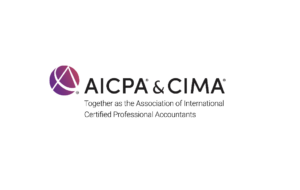The InnoVent CFO and co-founder explains that companies need to adopt circular economy practices.
More than 60 CFOs from leading global organisations. including Absa, BASF, Danone, and Unilever, joined the UN Global Compact CFO Taskforce and committed $500 billion over five years to support the UN Sustainable Development Goals (SDGs).
Aware that Environmental, Social and Governance (ESG) performance is becoming a critical metric for investors and stakeholders alike, these and other like-minded CFOs are driving the ESG agenda within their organisations to ensure secure, ongoing sustainable investments.
ESG indicators are now a crucial part of measuring organisational performance, as ESG ratings provide credibility that an organisation is accountable for good working conditions, fair labour practices, good governance and reduced environmental impact.
To attract the attention of investors, companies must report on key sustainability indices and goals that drive ESG performance ratings, including reducing carbon emissions and eliminating waste.
Leading companies measuring and reporting their performance against ESG indicators also track the integration of the UN Sustainable Development Goals (SDGs) such as SDG 12 which calls on organisations to use natural resources efficiently, implement environmentally sound waste management, and prevent and reduce waste through reuse and recycling.
An easy target for all organisations to improve their ESG performance is the sustainable lifecycle management of IT assets.
“CFOs can guide their organisations towards meeting ESG goals with sustainable IT solutions that ensure that the procurement, management, and disposal of IT equipment has minimal environmental impact,” explains InnoVent Investment Holdings co-founder and CFO Zakhe Khuzwayo.
He adds that this approach allows organisations to modernise their infrastructure, reduce carbon emissions and e-waste, improve ESG ratings and realise cost savings without affecting the bottom line. “Companies can adopt circular economy practices through innovative business models that extend the lifecycle of IT assets, maximise product reuse, increase recycling opportunities, and eliminate waste altogether.”
Circular economy practices in IT management include tracking IT assets from purchase to end-of-life, replacing outright device ownership with access to equipment found in Hardware-as-a-Service, subscription or leasing models, refurbishing or remanufacturing equipment for a ‘second life’, and the responsible disposal of end-of-life or ‘third life’ IT equipment:
- Tracking IT assets from purchase to end-of-life is a crucial circular economy practice to ensure maximum productivity from IT devices, the extension of the lifecycle of those IT assets, and the reduction of e-waste. This is best achieved with access to equipment, not ownership.
- Access to equipment through innovative Hardware-as-a-Service, subscription, or leasing models eliminates the hassles of 100 percent ownership of IT equipment. For instance, leasing models featuring built-in upgrades – before the equipment becomes obsolete – typically within two to three years – eliminate hassles and associated costs from legacy IT equipment. These include ongoing maintenance that increases operational risk and employee downtime, the need to store obsolete equipment with no resale value, and the obligation of environmentally responsible recycling or disposal.
- Refurbishing or remanufacturing equipment for a ‘second life’: A holistic solution, also found in access-over-ownership models, enables organisations to return IT equipment for repair and/or refurbishment through approved vendors for reuse. This refurbished or ‘second-life’ IT equipment also provides organisations with access to good quality equipment with cost savings of between 30 percent to 50 percent.
- Responsible disposal or ‘third life’: A responsible IT asset disposal solution is required to address complex and compliance issues created by a lack of or ineffective disposal policies, for example, data security, storage overflow, space constraints and e-waste. IT asset disposal should provide secure data sanitisation for confidential data stored on old devices to avoid data breaches and ensure obsolete IT equipment is recycled or responsibly disposed of through accredited service providers in accordance with high industry standards for environmental stewardship.
Implementing such sustainable IT practices can be both easy and affordable. For example, a subsidised finance model such as the one InnoVent offers can eliminate the need for expensive CapEx to fund IT equipment and enables CFOs to preserve their working capital and healthy credit lines with banks and redirect their cash reserves to core business activities that can help generate profits.
“With smart alternatives to traditional IT asset management practices and financing models, CFOs can cut costs, boost business performance and enhance competitiveness, while reaping the significant benefits of strong ESG ratings, including improved brand image and greater investor and stakeholder confidence,” concludes Zakhe.
“The right circular economy practices and innovative business models for sustainable IT asset management can ensure your organisation benefits from greater returns on IT asset investments, meets environmental and compliance criteria, limits ESG exposure and improves ESG performance – all of which will positively impact the overall sustainability efforts of the company, while improving the bottom line.”










